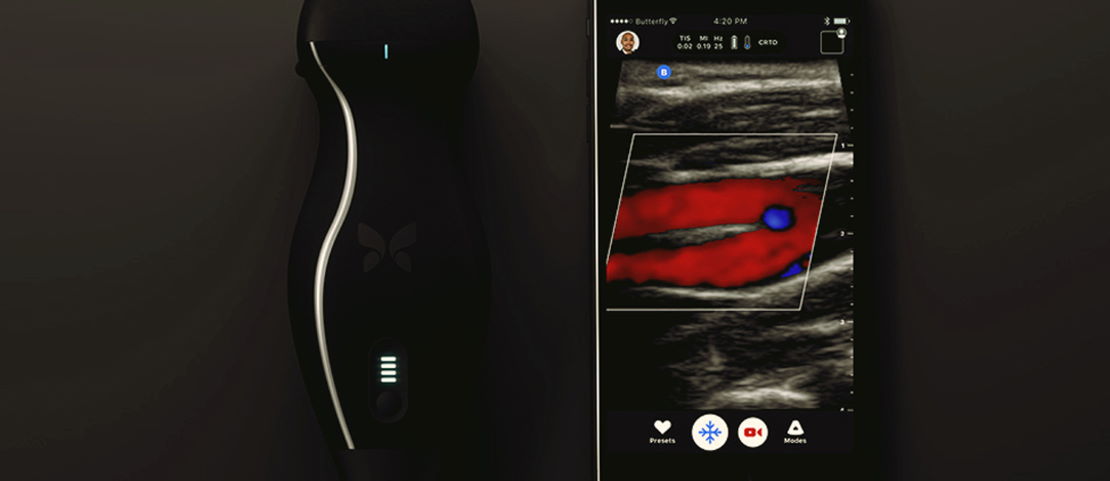

PoC Ultrasound - The Future of Imaging?
Within imaging, patients have long had to travel to a hospital with a dedicated room containing a large, intimidating machine to have essential scans. However, the arrival of PoC imaging has changed all that.
Pocket Sized Progress
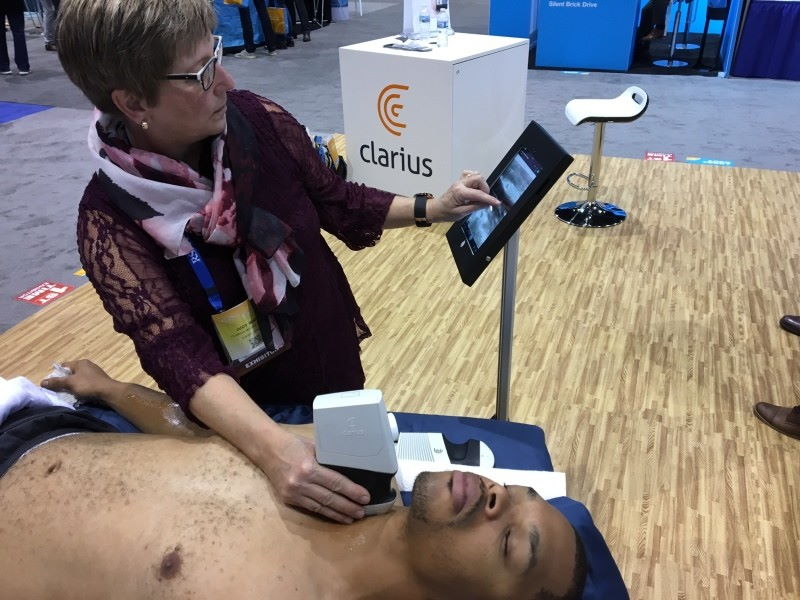
It’s traditionally been quite an undertaking to have an ultrasound scan performed. An individual scan costs around $250 and is usually carried out with a large machine in a dedicated room or department in a hospital.
PoC scanners are pocket-sized, wireless and easy to use. They also often have a one-size-fits-all transducer which enables them to perform different types or depths of scan quickly.
One company boasting this capability is Clarius. The developers behind Clarius have serious imaging credentials. They were behind both the first PC-based platform for ultrasound and created the first touch screen ultrasound system. Therefore, it’s no surprise that their system already has more than 12,000 users worldwide.
The ease of use and portability also means that the physician can perform an ultrasound in an initial assessment – eliminating the need to book an appointment for a separate, often costly, scan.
Humanitarian Impact
Another PoC company making waves, if you'll excuse the pun, is US based Butterfly IQ.
They claim to be dedicated to ‘democratizing ultrasound’ - making medical imaging accessible to everyone on the planet. Being global is a key part of their appeal. They demonstrate the real humanitarian impact that their technology can have.
It’s simply not practical or possible to take the medical imaging hardware we see in hospitals to remote locations. This means that patients in need of treatment can often miss out on vital scans and a higher standard of care.
The fact that these devices are low cost, handheld and can be used with a smartphone changes all that. These pocket-sized scanners allow physicians to conduct sophisticated scans wherever they are in the world, potentially providing life-saving insight in areas where hospital scans aren’t accessible.
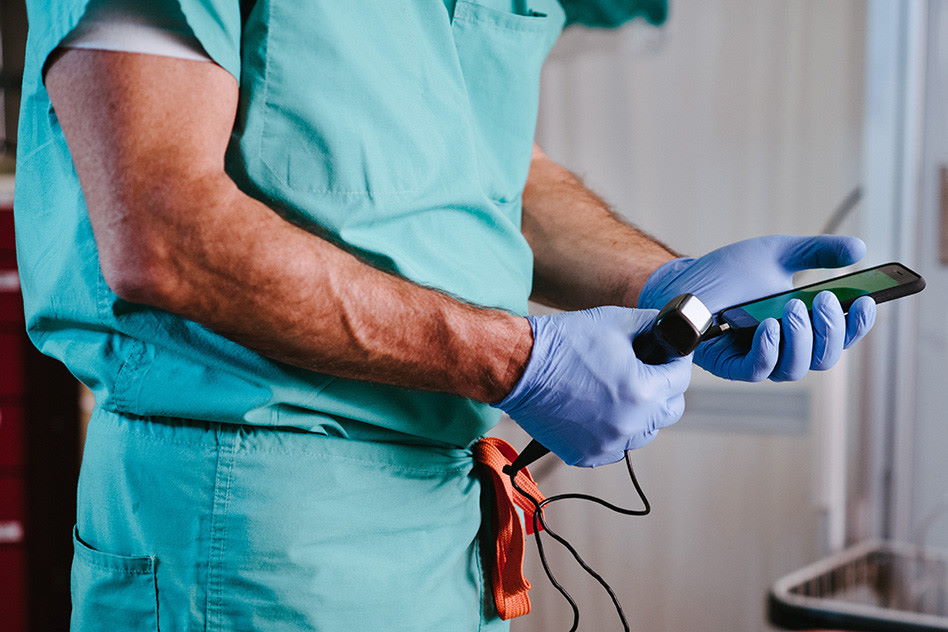
Their easy to use system combines a simple, portable device with AI and cloud-based storage solutions. The lack of wires also leads to a lower risk of contamination and infection – potentially lifesaving details in less than ideal treatment conditions.
Butterfly are a real disruptor in the industry – not only is their device simple, but there’s also a low price point with each ‘iQ’ device coming in at just $2000. Bearing in mind that conventional scanners can cost up to $100,000 – that’s a huge difference.
It remains to be seen if this price point is sustainable. The unit has had success in the US but is still to go on sale in the UK, so the proof will be in the sales over the next couple of years.
The Next Stage of Ultrasound
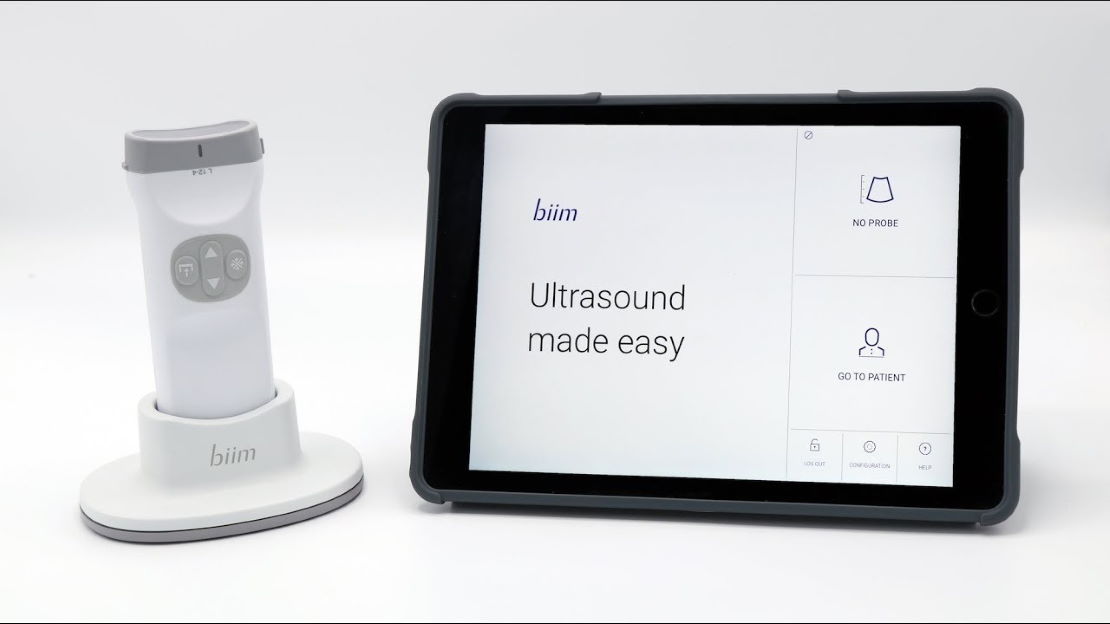
Biim (pronounced beam) are a young Norwegian company who have received over $12m in funding as of January this year. They’ve gained FDA approval for five applications for their device, including musculoskeletal, needle guidance, paediatric, peripheral vessel and small organ (breast, thyroid, parathyroid, testicles), demonstrating the versatility of the scanner.
As it becomes more commonplace to have instant access to an ultrasound scanner, more and more applications for these devices are sure to emerge. For example, the portability of the devices could allow physiotherapists to make a diagnosis, pitch-side, for a Premier League footballer.
There’s sure to be lots more applications too. And once those applications have been devised, they’ll be much easier to pass on.
That’s because PoC scanners also make teaching much easier. Rather than having to take the lecture or seminar group into the hospital, the teacher can simply bring the device to the students. The low cost of the devices also means that students will be able to spend more hands-on time with them.
Making Everyday Easier
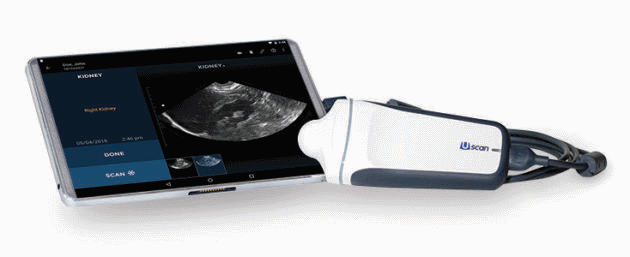
The last company I wanted to highlight are EchoNous – already a leading developer of intelligent medical tools – whose aim is working towards integrating AI into every day medical procedures.
Their platforms, the Uscan and EchoNous Vein, are designed for nurses, nurse practitioners and medical assistance to help deliver the best patient care with minimal discomfort.
The Uscan is an AI-driven bladder tool, which extracts more data from a patient’s bladder by combining it with machine learning based algorithms to help physicians make better informed decisions and diagnoses.
The EchoNous Vein allows medical professionals to quickly and easily identify veins, specifically designed for nurses inserting peripheral IV catheters – ensuring success first time and reducing patient discomfort.
As with all the devices and companies I’ve highlighted – the lack of a huge machine with many wires and complicated configuration also makes the whole treatment process much less intimidating for the patient and simpler for users.
The Future of Ultrasound?
As demand grows for Point of Care Ultrasound (PoCUS) devices, currently calculated at CAGR of 6.9% until 2025, expect to see the companies mentioned here develop further.
Recommended.

Putting Digital Pathology Front of Mind in Medical Imaging.
The digital pathology sector has seen a great focus within medical imaging in recent years. The use of digital technologies, advanced technology and AI integration means trends are shifting. These companies are leading the way.

Career Progression for Women in STEM.
In this episode, Ellen catches up with Laura Piila, VP of Devices at Optomed. Touching on the challenges she has faced as a woman in STEM, securing FDA approval in MedTech and loads more.
.jpg)
Four Recruitment Lessons for RSNA.
Ahead of RSNA, I thought I would look back at some of the things I’ve learned from those conversations in sales, marketing, leadership, and technical recruitment over the years. Click to find out.

Down Under Takes Top Spot: Australian Start-ups to Know.
Australia has created the perfect space for medical imaging start-ups to take off. We look at medical imaging companies making the most of this post-pandemic.
Comments.